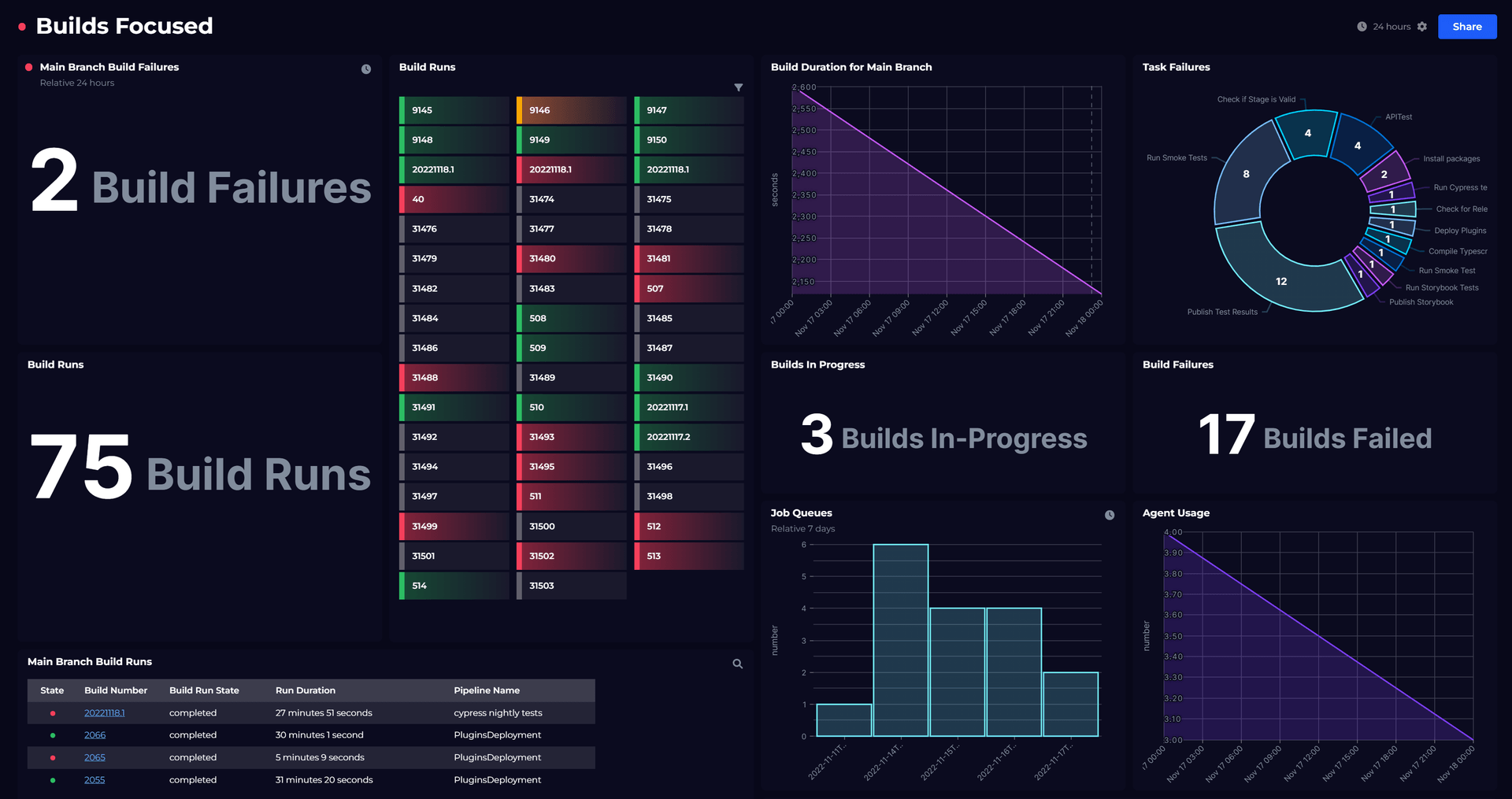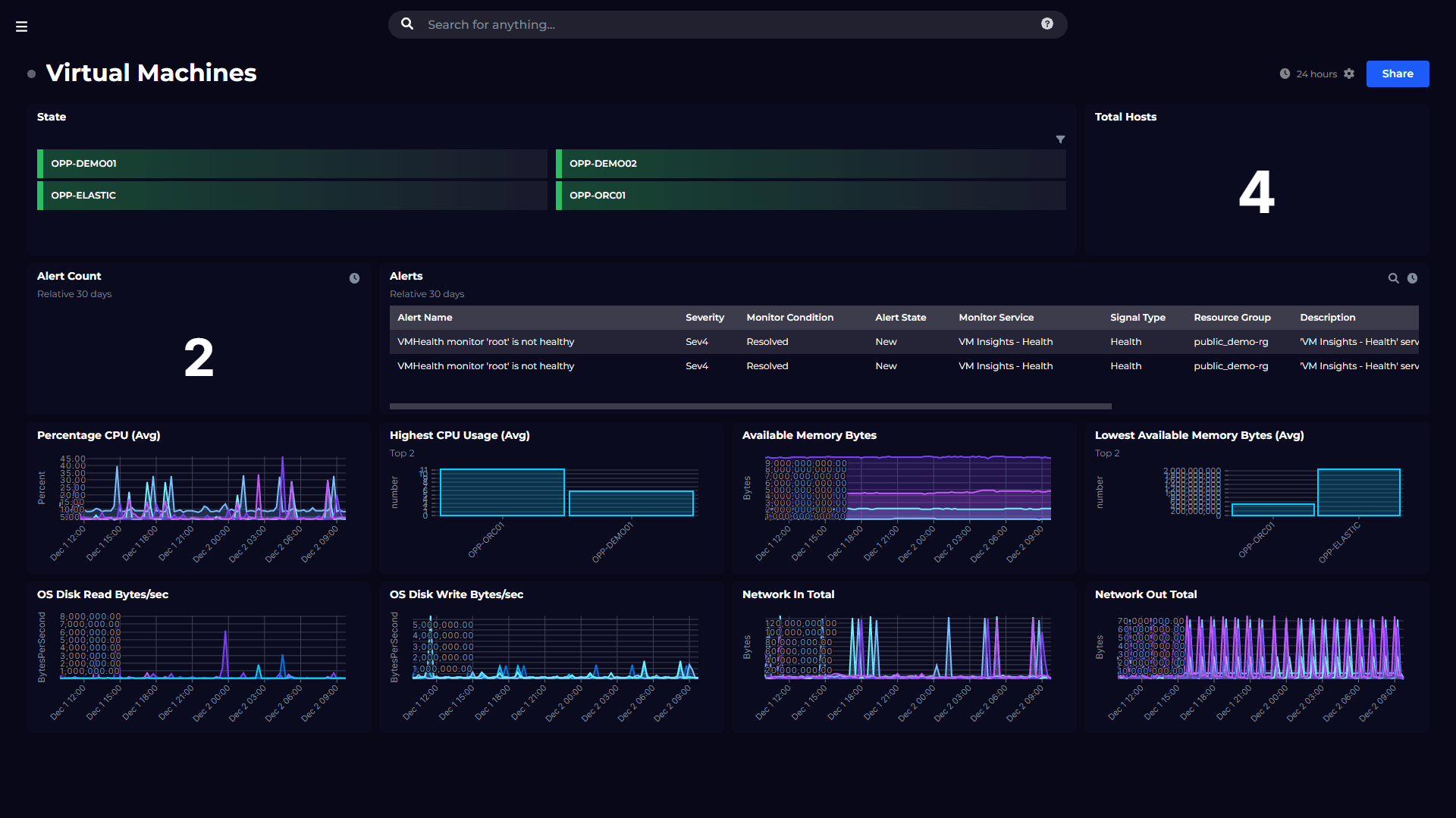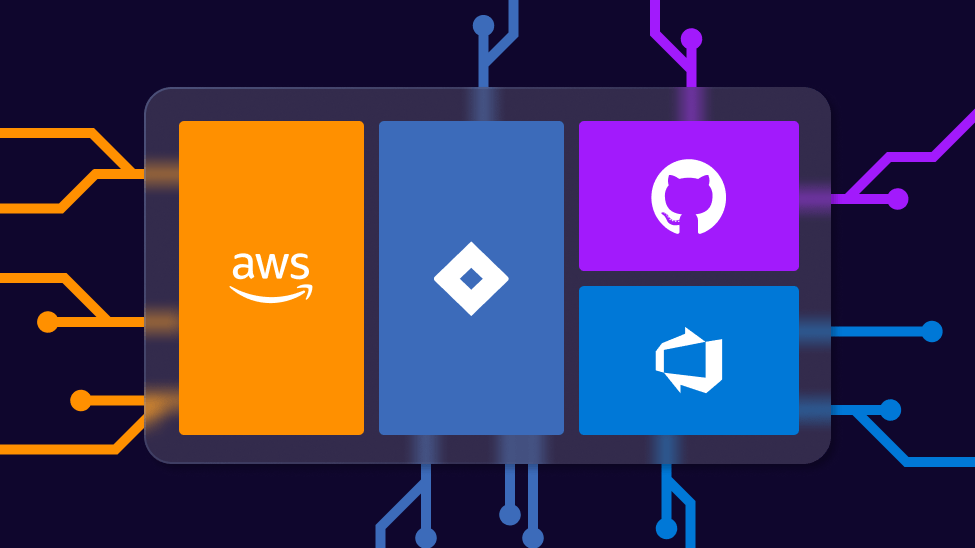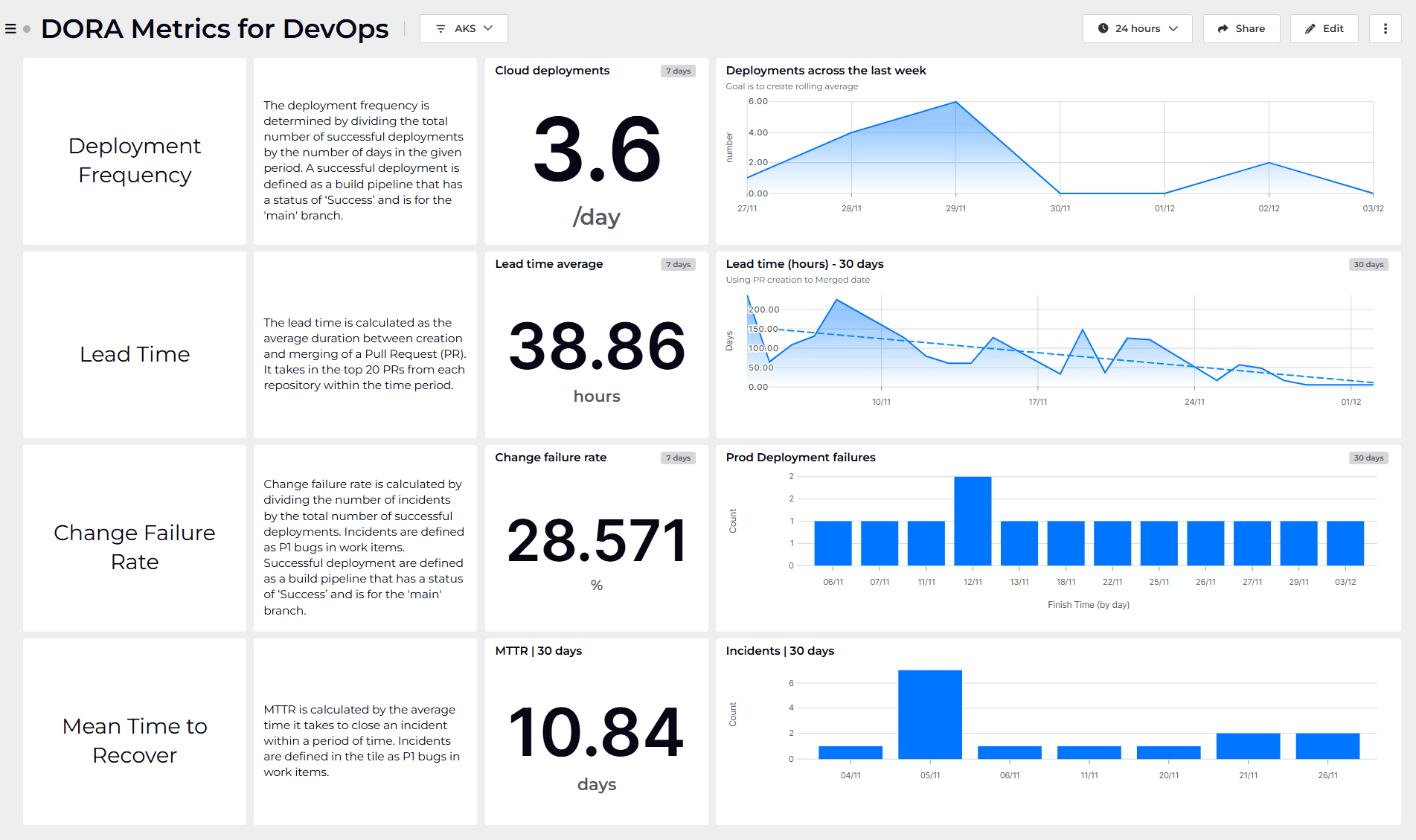
What is Azure DevOps? The Ultimate Guide
GuidesCollaboration and efficiency are the golden standards of fast-paced software development. Development and Operations teams must work in harmony to deliver high-quality, reliable applications at a rapid pace. This collaboration between Development and Operations has led to the creation of merged DevOps teams, and many use platforms like Azure DevOps to manage projects. If you belong to one of these teams, you may be asking the question, "What is Azure DevOps, and is it the right tool for me?" Let's take a deep dive.
What is Azure DevOps?

Microsoft Azure DevOps is a comprehensive platform for managing software development projects. It empowers Development and Operations teams to work together seamlessly and offers a suite of tools and services that cater to every stage of the development lifecycle.
From planning and coding to testing and deployment, Azure DevOps (often abbreviated to ‘ADO’ by users) streamlines the entire process, ensuring that software projects are delivered on time without compromising quality.
So how can it revolutionize your organization's software development efforts?
Read on to discover the core features, benefits, and best practices of the platform.
A quick Azure DevOps overview
- Azure DevOps is a comprehensive suite of services offered by Microsoft on the Azure cloud platform to manage software development projects.
- It offers reliable, accessible, and flexible solutions that provide automation for high-quality software delivery.
- Benefits of Azure DevOps over other platforms includes the ability to leverage existing tools and optimize costs with the SaaS model. An Azure DevOps overview
Born from the evolution of Visual Studio Team System, Azure DevOps has grown to offer a comprehensive suite of services tailored to each stage of the development lifecycle.
These services, collectively known as Azure DevOps Services, include:
- Azure Repos
- Azure Pipelines
- Azure Artifacts
- Azure Boards
- Azure Test Plans
- and more
Together, they provide a central place for managing the entire software development process.
Let's dive deeper into the services it offers.
The key Azure DevOps Services for the development lifecycle

One of the most powerful aspects of Azure DevOps is the range of services it offers to cater to different stages of the development lifecycle.
Azure Repos is a service that provides tools for version control. It helps to track and manage changes made to code over time. With Azure Repos, teams can store and work on code in a shared repository, track and merge changes from multiple branches, and support collaborative pull requests and advanced file management.
Another crucial service is Azure Pipelines, a CI/CD (Continuous Integration/Continuous Deployment) tool that automates building, testing, and deployment. Compatible with any programming language or platform, Azure Pipelines can deploy to multiple environments, including Kubernetes clusters, serverless functions, and other cloud providers like AWS or GCP. The Azure Pipelines marketplace also offers extensions to further enhance your pipelines.
Azure Boards, on the other hand, is a project management hub within Azure DevOps that enables teams to plan, track, and collaborate on their projects. It offers features such as work items, Kanban boards, backlogs, dashboards, and custom reports, providing flexibility and insights to monitor project progress.
Lastly, Azure Test Plans is a service that facilitates manual and exploratory testing, feedback tracking, and unit and functional testing. It also supports continuous testing, ensuring that your software projects are thoroughly tested and ready for deployment.
4 key Benefits of Using Azure DevOps

Reliability and flexibility
Azure DevOps provides numerous benefits, including reliability, accessibility, and flexibility. It claims a 99.9% uptime SLA and 24/7 support. Its cloud-based service availability offers access to the platform from anywhere, while its flexibility allows users to use existing tools and integrate with a variety of third-party tools, such as Ansible, Chef, Puppet, and Terraform.
Automation
Automation is another key advantage of Azure DevOps, as it streamlines and expedites development processes across the entire application lifecycle. This increased efficiency means that organizations can deliver high-quality software faster than ever before, making Azure DevOps a popular choice for orchestrating a DevOps toolchain.
Collaboration and Efficiency
Azure DevOps facilitates inter-departmental communication and collaboration by offering developer services and multiple integration points, ensuring that teams can work together seamlessly. Integration with popular tools such as GitHub, Jenkins, and Slack further enhances collaboration and efficiency.
Azure DevOps also enables teams to monitor changes across multiple projects with the help of a dashboard, providing alerts and notifications when changes occur. This level of visibility and control allows organizations to stay on top of their software development projects, ensuring that they are delivered on time and meet the required quality standards.
Integration with Third-Party Tools
With Azure DevOps, organizations can easily integrate with a variety of popular open-source and third-party tools and services across the DevOps workflow. This flexibility allows teams to expand and tailor their DevOps toolsets to meet the specific needs of their organization and development projects.
By integrating with the tools that teams are already familiar with, Azure DevOps not only streamlines processes, but also reduces the learning curve associated with adopting new tools. This seamless integration is a major factor in the platform's widespread popularity and success.
Azure DevOps for Non-Microsoft Organizations
While Azure DevOps is a Microsoft product, you don’t have to be a Microsoft-centric organization to use it. In fact, Azure DevOps offers non-Microsoft organizations the flexibility and integration necessary to develop and enhance products at a faster rate than traditional software development methods.
With its comprehensive suite of tools and services, Azure DevOps can greatly benefit organizations of all sizes and technology stacks, regardless of whether they are primarily focused on Microsoft technologies or not. This versatility makes Azure DevOps an attractive option for organizations looking to streamline their software development processes and improve collaboration between development and operations teams.
Azure DevOps Deployment Options
Azure DevOps offers two deployment options to cater to the diverse needs of organizations: cloud-based and on-premises. Each deployment option comes with its own set of features and benefits, and the choice between the two will depend on factors such as an organization's infrastructure, security requirements, and scalability needs.
Let's explore each of these options in more detail.
Cloud-Based Azure DevOps

The cloud-based version of Azure DevOps offers a host of benefits, including accessibility, scalability, and cost-effectiveness. As a Software as a Service (SaaS) offering, cloud-based Azure DevOps can be accessed from anywhere with an internet connection, making it an ideal choice for organizations with distributed teams.
This deployment option also offers great scalability, allowing organizations to easily expand or contract their use of Azure DevOps services based on their needs. Furthermore, the pay-as-you-go pricing model of cloud-based Azure DevOps ensures that organizations only pay for the resources they actually use, leading to cost savings and efficiency gains.
On-Premises Azure DevOps Server
On the other hand, Azure DevOps Server (formerly known as Team Foundation Server) is the on-premises deployment option for the platform, installed and hosted on an organization's own servers. This option provides additional control over the environment and data, which may be preferable for organizations with strict security and compliance requirements.
However, on-premises Azure DevOps Server has some differences in functionality and authentication compared to its cloud-based counterpart. For example, it typically connects to an intranet server and requires authentication with Azure AD credentials, limiting its use to the server's premises.
Nevertheless, on-premises Azure DevOps Server remains a good option for organizations that prefer to keep their software development infrastructure in-house.
Pricing and Licensing Models
Azure DevOps offers a range of pricing and licensing models based on the size of the project and the number of users. Licensing levels include Basic, Basic++,. Test Plans, and Visual Studio Subscriber. Additionally, Azure DevOps provides individual service pricing options as well as user license pricing.
Open-source projects and Visual Studio subscribers have the opportunity to access Azure DevOps services free of cost, depending on their subscription level. Furthermore, they may be eligible for additional benefits. This flexibility in pricing and licensing ensures that organizations of all sizes can find a cost-effective solution that meets their specific needs.
Azure DevOps vs. GitHub

When choosing a platform for managing software development projects, organizations often find themselves comparing Azure DevOps and GitHub. While both platforms offer robust features and functionality, there are some key differences that may influence an organization's choice.
GitHub is primarily focused on open-source projects and offers a strong community-driven ecosystem. It is well-suited for organizations that prioritize collaboration and transparency in their software development processes. On the other hand, Azure DevOps is designed to cater to both open-source and closed-source projects, with a more comprehensive suite of tools and services that cover the entire software development lifecycle.
Ultimately, the choice between Azure DevOps and GitHub will depend on an organization's specific needs and priorities. By understanding the strengths and weaknesses of each platform, organizations can make an informed decision to ensure they choose the best tool for their software development processes.
Getting Started with Azure DevOps
If you're ready to embark on your Azure DevOps journey, the first step is to familiarize yourself with the fundamentals of DevOps practices, such as Agile planning, version control, continuous integration, and continuous delivery. With a solid foundation in place, you can then explore beginner-friendly tutorials available online to help you get hands-on experience with Azure DevOps.
By learning the basics and diving into practical exercises, you'll be well-equipped to start leveraging the power of Azure DevOps in your organization's software development projects and reap the benefits of streamlined processes, improved collaboration, and accelerated delivery.
3 Tips for Maximizing Azure DevOps Potential
To truly unlock the full potential of Azure DevOps, organizations should consider the following tips: First, leverage existing tools and integrate with third-party solutions to create a streamlined and cohesive DevOps toolchain. This will ensure that your teams can work seamlessly together, using the tools they're already familiar with while benefiting from the powerful features offered by Azure DevOps.
Second, embrace the Software as a Service (SaaS) model provided by cloud-based Azure DevOps. This allows for greater scalability, accessibility, and cost-effectiveness, enabling your organization to grow and adapt to changing needs without being constrained by infrastructure limitations.
Lastly, stay up-to-date with the latest Azure DevOps features, enhancements, and best practices. Regularly reviewing updates and improvements will ensure that you're always utilizing the platform to its fullest potential, maximizing the benefits reaped by your organization.
How to keep your CI/CD pipelines flowing smoothly
Monitoring ADO is key to keeping pipelines flowing smoothly. Azure DevOps provides native dashboards to help you monitor your builds. However, they are limited in their ability to aggregate data and provide multi-project overviews.

At SquaredUp, we make it super simple to track progress, measure success, alert on thresholds, and provide actionable insights to keep CI/CD pipelines flowing smoothly. SquaredUp dashboards let you monitor the status of your CI/CD automation, monitor Azure DevOps for failures and large queues, track the usage of your agents and resources, and summarize work items and test cases.
Check out our Azure DevOps dashboards and see the data you see out of the box.
Summary – What is Azure DevOps and is it for me?
In conclusion, Azure DevOps is a powerful and comprehensive platform for managing software development projects. It offers a wide range of tools and services that cater to every stage of the development lifecycle, from planning and coding to testing and deployment. By fostering collaboration, streamlining processes, and offering unparalleled flexibility, Azure DevOps has the potential to revolutionize your organization's software development efforts.
Whether you're part of a small start-up or a large enterprise, Azure DevOps can help you deliver high-quality, reliable applications at a rapid pace. With its rich feature set, extensive integration capabilities, and proven success in real-world scenarios, Azure DevOps is an invaluable asset to any organization looking to optimize their software development processes and stay ahead of the competition.
Frequently Asked Azure DevOps Questions
Yes, Azure DevOps is a tool that provides services and tools to develop and deploy software projects. It offers a comprehensive toolchain and integrates with Microsoft's development stack.
It also provides agile work management features such as kanban boards, backlogs, custom dashboards and reporting capabilities.
Azure DevOps was previously named Visual Studio Team Services (VSTS). Before that, it was called Team Foundation Server (TFS).









